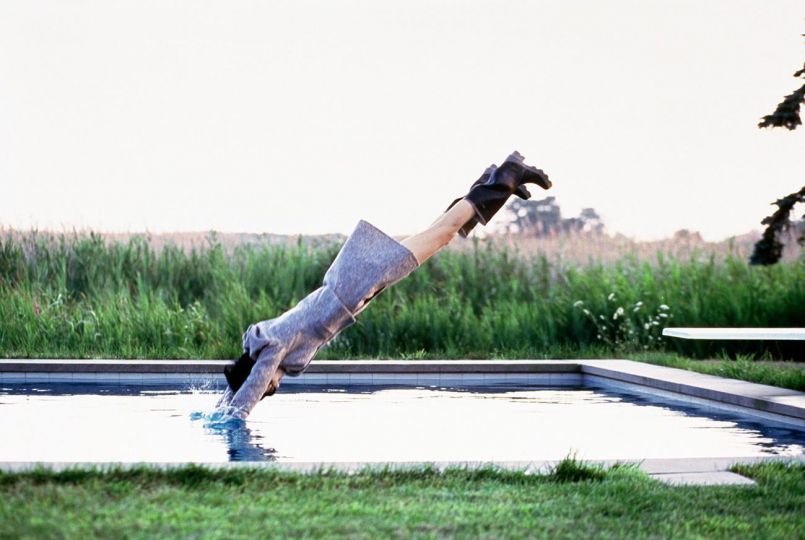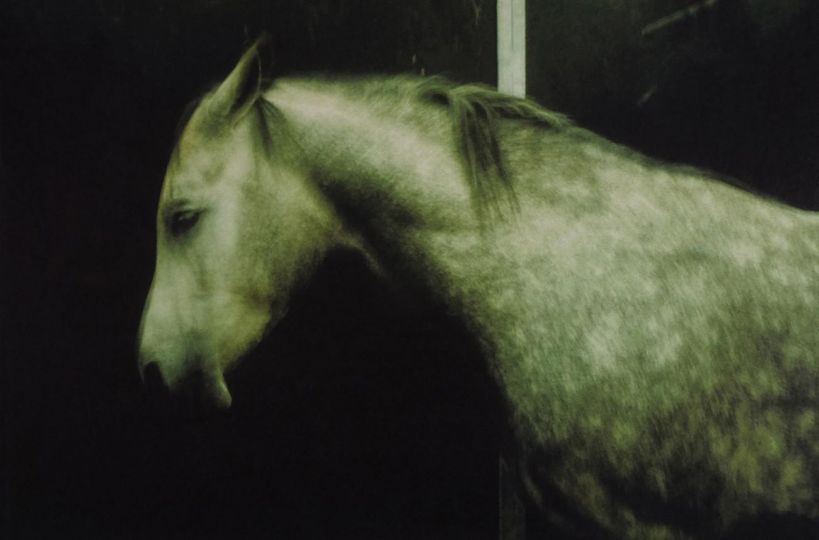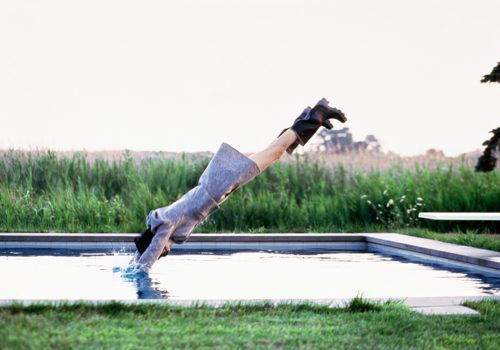Lisson Gallery presents a new exhibition by multi-disciplinary artist Hiroshi Sugimoto, marking his first show in Los Angeles in over a decade. The presentation, titled Form is Emptiness, Emptiness is Form, showcases Sugimoto’s investigation of the visible and invisible world through the forms of photography, architecture, sculpture and the written word. At its core is the American debut of Brush Impression, Heart Sutra (2023), accompanied by iconic photographs from the artist’s Sea of Buddha series and a new mathematical model based on Kuen’s Surface.
Upon entering the space, visitors are immediately introduced to the rear side of a large-scale, curved wall, constructed of exposed lumber and visible studs, providing a contrasting and tactile introduction to the 288 unique gelatin prints of Kanji characters hung on its opposing side. Brush Impression, Heart Sutra (2023) presents The Heart Sutra, a central scripture of East Asian Buddhism —read from right to left, top to bottom –offering a powerful meditative experience that envelops viewers. The work features large-scale calligraphic strokes meticulously developed using photographic methods akin to Sugimoto’s traditional process. Though the piece lacks a camera in the conventional sense, the interaction of light and a photochemical reaction evokes the essence of photography itself. The exhibition’s title, Form is Emptiness, Emptiness is Form, is a direct quote from the Heart Sutra and refers to the transient nature of all things – nothing has inherent substance or permanence and form is no other than emptiness as emptiness is no other than form. This line is the most quoted of the Heart Sutra, and an apt verse through which to understand the work of Sugimoto which is about capturing that which is at the edge of perception, challenging what we understand as truth and giving form to the intangible.
Surrounding the monumental piece are seven works from Sugimoto’s Sea of Buddha series, six individual photographs and one large-scale central figure, capturing the Buddha statues from the revered Sanjūsangen-dō shrine in Kyoto. These statues, each unique, were photographed at dawn, using only natural light—a process that saw Sugimoto eliminate all late medieval to early modern embellishments and turn off the contemporary fluorescent lighting. This approach allows viewers to experience the Buddhas as they would have appeared centuries ago, bathed in morning light. The imagery evokes a spiritual timelessness, drawing connections between past and present, tradition and artistry.
Also in the gallery will be a new mathematical model, an extension of Sugimoto’s ongoing fascination with form and perception. In this work, the artist transforms mathematical equations for Kuen’s Surface into a tangible object made of pure stainless steel. The creation of these models is inspired by the legacy of figures like Isaac Newton, whose pioneering work in mathematics and investigations into humanity’s understanding of the world have been a source of guidance to Sugimoto throughout his career. During the 19th and early 20th centuries, mathematicians and artisans sought to give physical form to complex geometric ideas, crafting mathematical models by hand in plaster. Sugimoto’s new work continues this tradition through a modern technological lens, taking on a curvilinear horizontality that invites reflection on the convergence of abstract theory and material reality.
Hiroshi Sugimoto : Form is Emptiness, Emptiness is Form
Until January 11, 2025
Lisson Gallery
1037 N. Sycamore Ave.
Los Angeles, CA 90038
www.lissongallery.com
















